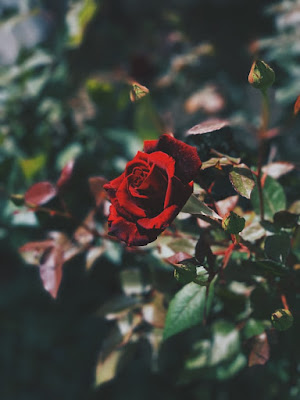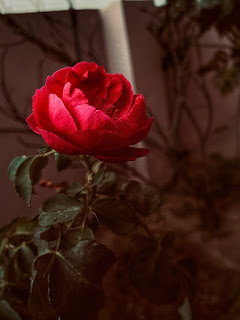Welcome to the Flowering Guides @GreenUp. Let's know how you can grow healthy rose if you want to have your garden filled with lots of roses.
Grow Roses For Beginners
Rose

Planting
Site Selection
Selection of site is very important for the successful growth of any plant. For Rose plant, select the site which gets full day sunlight. In summers, during hot afternoon partial shade is preferred. The soil should be well-drained so that water-logging conditions do not arise.
Soil and Preparation
Rose plants grow well in moderately loamy soil, rich in organic matter and it should be well-drained as told earlier. The soil should be just slightly acidic- 6.5 is ideal. This is sufficient for healthy growth but for more care, you may even add cocopeat and perlite mixture if you want to be.
Propagation
Rose plants can be propagated by seeds, budding, cuttings, grafting and layering.
Planting
Rose plants can be planted at any time throughout the year. But, I won't prefer planting during extreme summers and extreme winters. I would prefer you to plant them from February to April or October to November. Maintain proper spacing of at least 20 to 25 cm between plants. Before planting, ensure that the soil is moist.
Watering
Roses are very fond of water. Water the plants every day.
During summers, you may need to water them twice a day if they fall under direct sunlight.
The amount of water they require also depends on their size.
Even though they love water, make sure that water does not collect there. So, arrange provisions for proper drainage.

Plant Care
Pruning
Pruning is essential if you want your plant to yield maximum flowers.
The best time for pruning is in spring before blooms start to show or when they are near the dormant stage.
Begin pruning at the base of the plant. Remove any crisscross shoots and weak, dry and diseased branches.
Fertilizing & Care
Fertilize your plants once in 15 days.
Roses require a good amount of NPK; Nitrogen, Phosphorus and Potassium.
Nitrogen supports the growth of the stem, yields maximum flower and more number of leaves. Phosphorus stimulates flowering and strength of stems and branches. Potassium is important for photosynthesis and many other vital processes that occur in a plant.
Weeding
Weeding is important so that your plants get all the nutrition and improves soil aeration capacity.
Do not carry out deep hoeing as it may destroy plant roots; just do shallow hoeing.
Pests, Disease
- Red Spider Mite
Mites appear first under the surface of leaves and then spread over to the plant. They can be treated by spraying the soap solution on the leaves.
- Caterpillar
Caterpillars eat away all the leaves. They destroy the foliage and plant looks like leafless. They can be treated by spraying insecticides.(Nuvan-0.15% to 0.2%)
- Aphids
These insects suck chlorophyll(green pigment on leaves responsible for photosynthesis) from leaves. These can be treated by the spraying of neem oil.
Harvesting

Harvest flowers when it attains the right colour. Harvesting should be done either in the morning or evening by sharp secateurs.
Exclusive Tips @Green Up
- Don't pool the soil with water as your plant will die with excess water.
- After
transplanting the plant, do not keep directly under sun. Keep it first
few days under shade (if possible), then a few days later, take them out
under the sun.
- Spray organic pesticides, so that it does not hinders the plant's growth, such as dilute solution of Neem Oil mixed with shampoo. Learn more about treating Pesticides.
- Learn more about fertilizers and their usage, doses.
Subscribe
to our blog. We will keep you updated with new cool things about
Gardening. Don't hesitate to Ask us anything, Go comment down your
Questions/Suggestions or Contact Us.



No comments:
Post a Comment